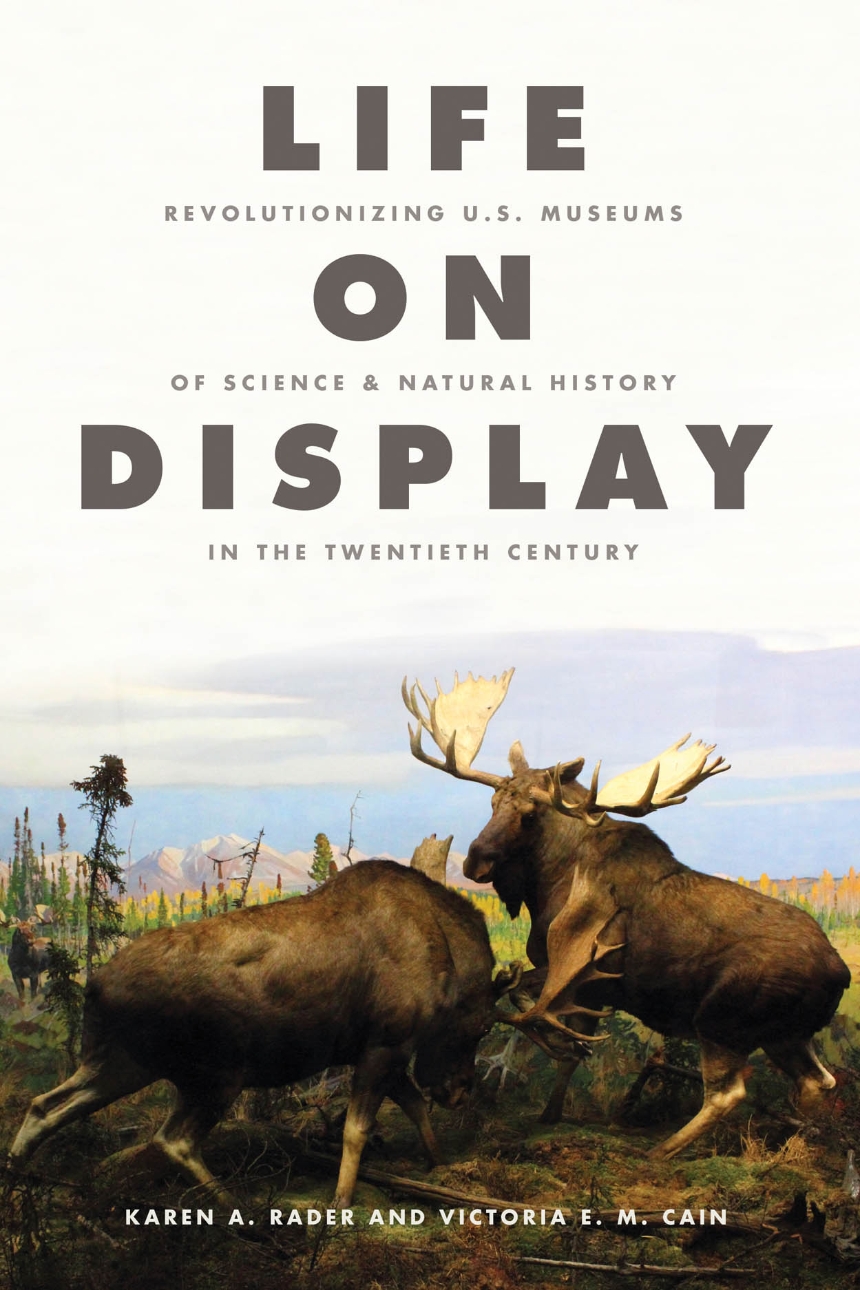Life on Display
Revolutionizing U.S. Museums of Science and Natural History in the Twentieth Century
Life on Display
Revolutionizing U.S. Museums of Science and Natural History in the Twentieth Century
Rader and Cain explain why science and natural history museums began to welcome new audiences between the 1900s and the 1920s and chronicle the turmoil that resulted from the introduction of new kinds of biological displays. They describe how these displays of life changed dramatically once again in the 1930s and 1940s, as museums negotiated changing, often conflicting interests of scientists, educators, and visitors. The authors then reveal how museum staffs, facing intense public and scientific scrutiny, experimented with wildly different definitions of life science and life science education from the 1950s through the 1980s. The book concludes with a discussion of the influence that corporate sponsorship and blockbuster economics wielded over science and natural history museums in the century’s last decades.
A vivid, entertaining study of the ways science and natural history museums shaped and were shaped by understandings of science and public education in the twentieth-century United States, Life on Display will appeal to historians, sociologists, and ethnographers of American science and culture, as well as museum practitioners and general readers.
456 pages | 23 halftones, 2 line drawings | 6 x 9 | © 2014
Biological Sciences: Natural History
Earth Sciences: History of Earth Sciences
Education: Education--General Studies
Reviews
Table of Contents
Acknowledgments
Introduction: The Mission of Display
1 “A Vision of the Future”: The New Museum Idea and Display Reform, 1890–1915
2 The Drama of the Diorama, 1910–1935
3 Displays in Motion: Experimentation and Stagnation in Exhibition, 1925–1940
4 Diversifying Displays, Diverging Museums: Postwar Life Science Education, 1941–1956
5 “An Investment in the Future of America”: Competing Pedgogies in Post-Sputnik Museums, 1957–1969
6 The Exploratorium Effect: Redefining Relevance and Interactive Display, 1969–1980
7 From Diversity to Standardization: Edutainment and Engagement in Museums at the End of the Century, 1976–2005
Notes
Bibliographic Essay on Sources
Bibliography
Index
Awards
History of Education Society: History of Education Society Outstanding Book Award
Won
Media Ecology Association: Lewis Mumford Award, Ecology of Technics
Won
AERA Division F: New Scholar's Book Award
Won
